History of TAMRON
The present corporate name is derived from the name of Mr. Uhyoue Tamura, who was a prominently recognized optical designer and laid the technological foundations of the company.
1950's
"TAMRON began everything with lens polishing in 1950"
-
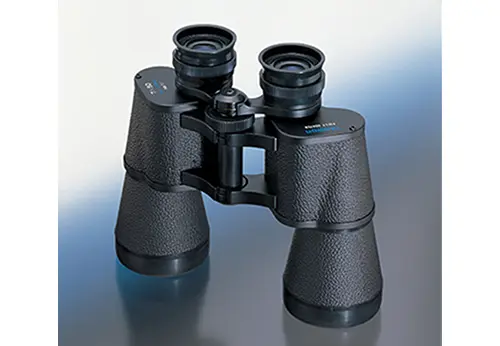
Binoculars, our first independent product
-
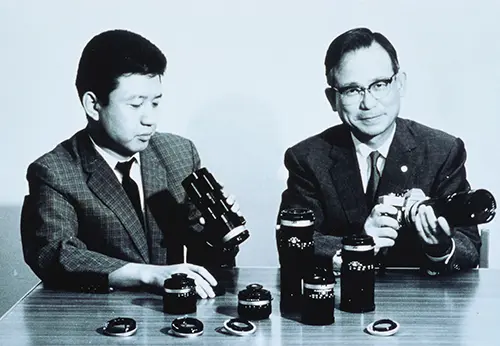
Founding member Takeyuki Arai, right, and Uhyoue Tamura, left.
-
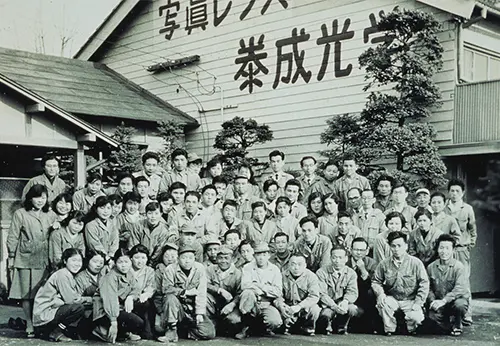
The Urawa Plant and employees in the early days
A founding member, Takeyuki Arai, based on his experience in the research and development of precision optical equipment during the war, believed in the potential of lenses, focusing on the excellence and future potential of Japan’s optical technologies.
Shortly after the end of the war, in November 1950, he launched a small factory with 13 staff members to produce camera lenses, binoculars and other optical equipment in the city of Urawa (currently known as the city of Saitama) in Saitama Prefecture. It was the start of Taisei Optical Equipment Manufacturing, the forerunner of TAMRON.
We began polishing binocular lenses on a subcontracting basis. In the early days of operation, there were a series of challenges. However, we persevered and worked to heighten the level of our lens manufacturing technologies, succeeding in placing the business on track. Learning lessons from those early difficulties and errors, we sought quality so persistently that we did deliver any product until it reached a satisfactory level. That led to our now-established reputation for high quality and our credibility.
Two years later, in 1952, Uhyoue Tamura joined the business. He would go on to lay the foundations for TAMRON’s optical technology today. At that time, we set up an optical design section and embarked on the independent development of binoculars. In the following year, 1953, we began manufacturing and sales of our first product, Wide Vision Binoculars 7x35 11°. Their great popularity gave us the impetus to make our leap into the future. After that, we made progress towards camera lens processing and then further towards the manufacturing of lenses for SLR cameras.
1960's
A period of rapid progress built on the effective use of
technologies and ideas
-
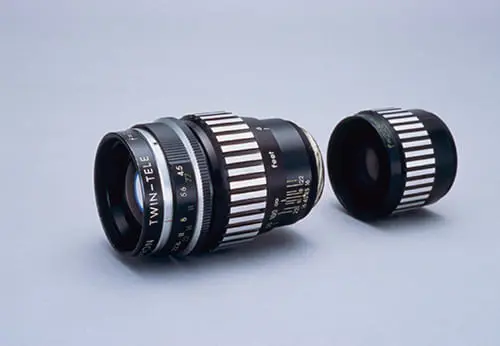
The 135 mm F/4.5 (Model #280) is TAMRON’s first interchangeable photo lens.
-
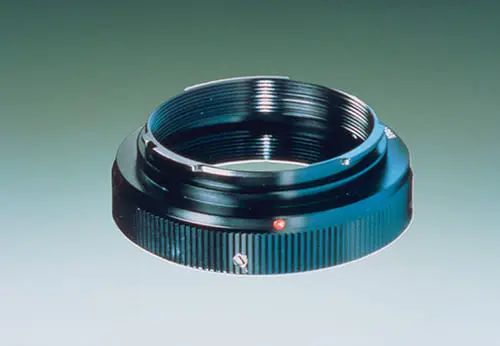
The T-mount was the world’s first universal interchangeable lens mount system for SLR cameras.
-
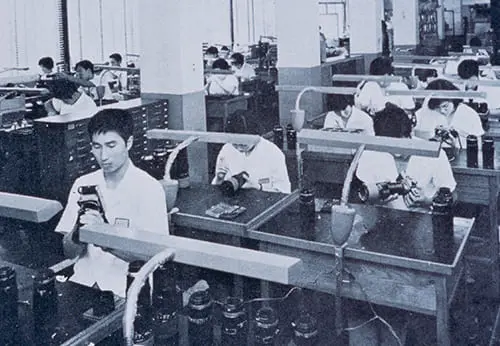
Working in the 1960s (1)
-
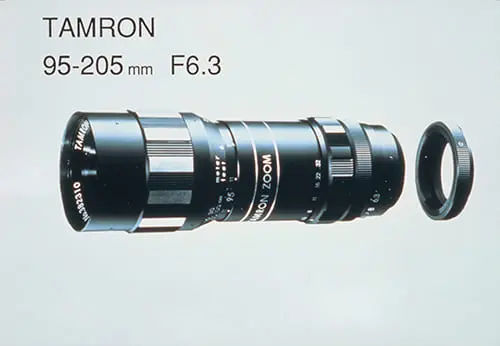
The 95-205 mm F/6.3 (Model #910P) was the industry’s first affordable telephoto zoom lens.
-
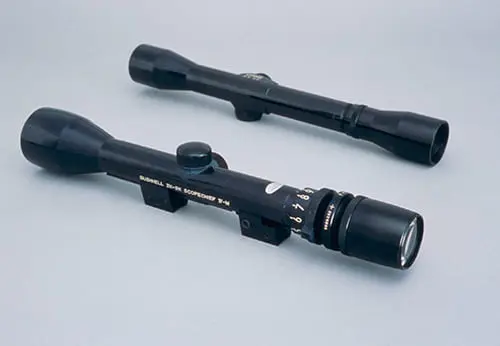
Spotting scopes
-
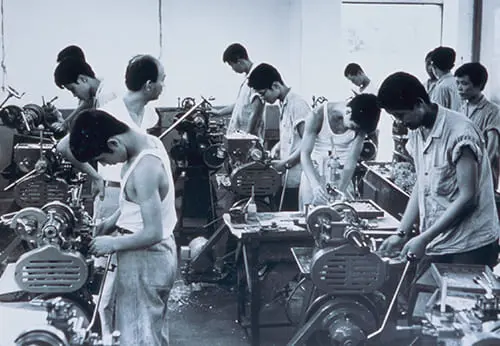
Working in the 1960s (2)
-

The mount part of the TAMRON Adapt-A-Matic universal interchangeable lens mount system for SLR cameras and lenses supporting auto-focus
-
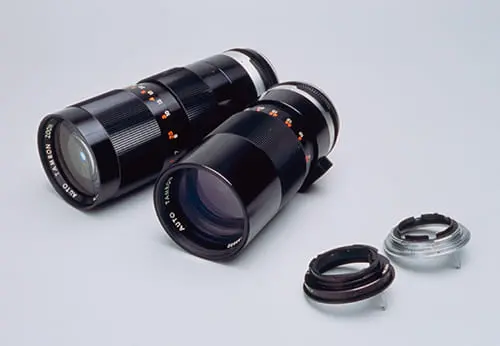
The TAMRON Adapt-A-Matic universal interchangeable lens mount system for SLR cameras and lenses supporting auto-focus
-
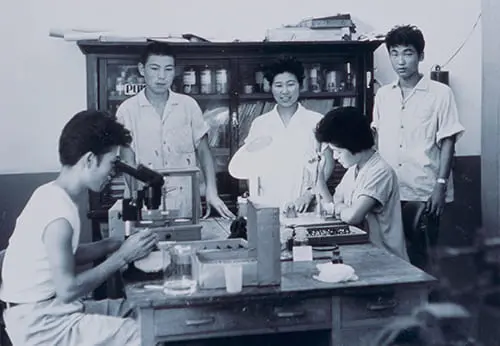
Working in the 1960s (3)
In the 1950s, cameras and lenses made in Japan came into the limelight due to the highly regarded photojournalism of Korean War correspondents. Until that time, German cameras and lenses had enjoyed overwhelming popularity. However, Japanese cameras developed a great reputation among the U.S. military personnel based in Japan for their performance and demand soared. As a result, leading camera manufacturers competed fiercely to build single-lens reflex cameras.
Takeyuki Arai, one of the company’s founders, opted not to follow major camera manufactures by beginning to produce cameras. Instead, he embarked on the development and production of telephoto lenses, which other companies had not paid attention to. At that time, monthly production was around 300 units. Later, the factories at Akabane and at Yono were integrated and moved to Urawa, where an integrated production structure for camera lenses was constructed. Under this structure, TAMRON’s first interchangeable lens, the 135 mm F/4.5 (Model #280), was created. This telephoto lens introduced the T-mount, the world’s first universal interchangeable lens mount system for SLR cameras. The T-mount was a unique product at that time because it allowed lenses to be attached to cameras from different manufacturers with just a quick change to the lens mount. To commercialize and market this lens and the T-mount to the world, they were named TAMRON after lens designer Uhyoue Tamura. That began our full-scale development, production and sales of interchangeable lenses, which included the 200 mm F/2.8 (Model #360), the 400 mm F/5.6 (Model #340) and other telephoto lenses. It was around that time that we released the 95-205 mm F/6.3 (Model #910P), the industry’s first affordable telephoto zoom lens.
In the 1960s, we succeeded in developing the TAMRON Adapt-A-Matic range of lenses. The Adapt-A-Matic was a universal interchangeable lens mount system for SLR cameras that supported auto-focus. (1)
That was the time when not just professional photographers running photo studios but also general consumers began to use cameras to take family photos. As it became possible to stably mass produce and supply cameras, popularity increased as reasonably priced models started to be sold.
It is also around that period that we began to turn our eyes toward the world. We embarked on the development, manufacturing and mass production of spotting scopes, selling them mainly in the United States. (2) In those days, spotting scopes were a luxury product. Our products gained a good reputation for their made-in-Japan quality. In the late 1960s, we began producing lenses for ITV and television broadcasting using the optical technologies that we had cultivated. This laid the foundation for the expansion of our development efforts to lenses for surveillance cameras, lenses for factory automation and machine vision, automotive lenses, drone lenses and many other industrial lenses.
1. Auto-focus refers to a mechanism that sets the lens at open aperture during the focusing process and at the preset aperture value when the shutter is released.
2. A spotting scope is an optical product classified as a type of telescope mainly used for viewing distant terrestrial objects.
1970~80
Now-Familiar Optical Products
And TAMRON's Mission as a Manufacturer Behind the Scenes
-
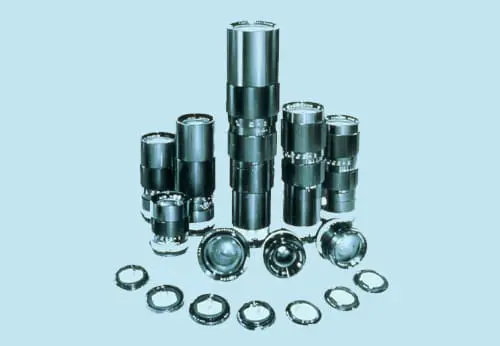
Adaptall Lens'
-
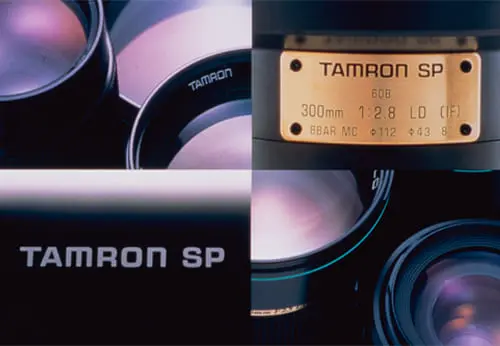
SP Series
-
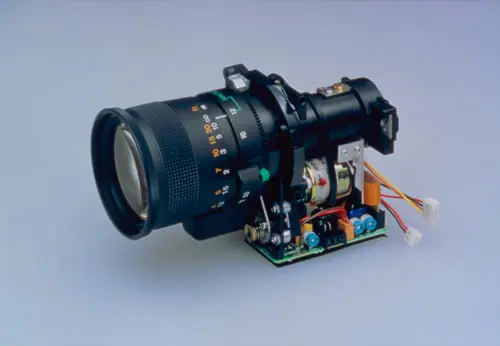
Video camera lenses
-
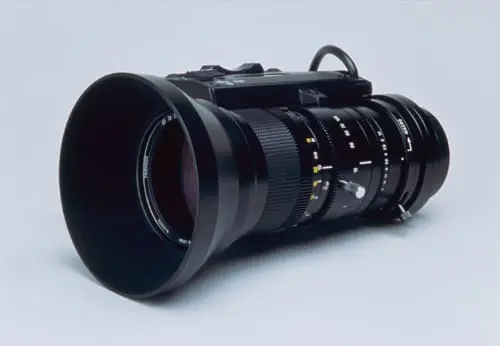
Industrial camera lenses
-
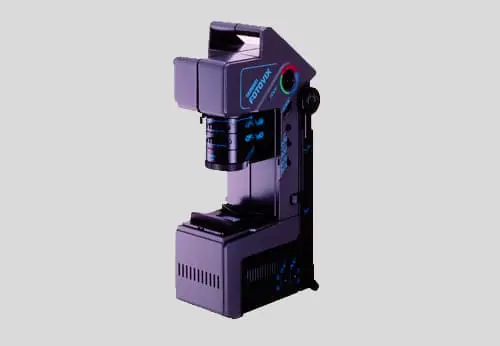
FOTOVIX
-
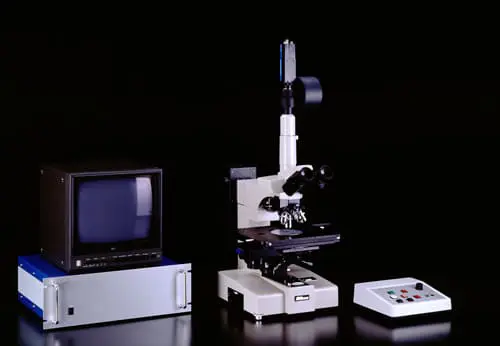
AF microscope
-
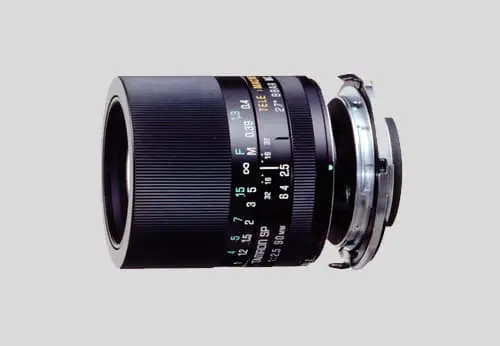
First generation 90mm macro lens 90mm F/2.5 (Model 52B)
-
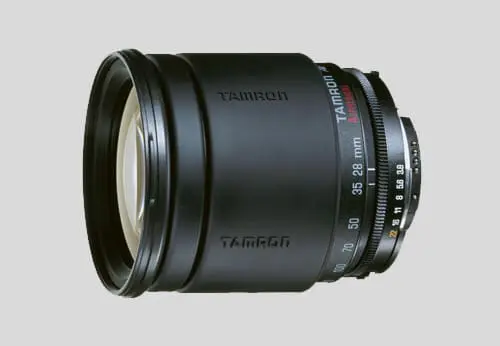
Launched AF28-200mm F / 3.8-5.6 (model 71D), the world's smallest and lightest zoom lens for high magnification SLR cameras
-
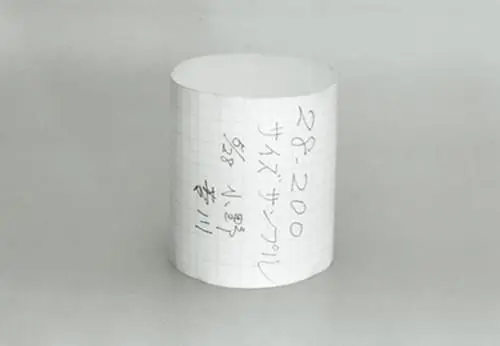
71D size sample
In the 1970s, photographic film was in the midst of a dramatic shift from monochrome to color. Momentum was also shifting at TAMRON with the company name changing from Taisei Optical Equipment Manufacturing Inc. to Tamron Co., Ltd.
It was also around this time that various camera manufacturers started to release cameras that "anyone can easily take beautiful pictures with," entering an era in which regular consumers could more easily own cameras. TAMRON followed suit, developing, manufacturing and releasing numerous interchangeable lenses and industrial lenses to high acclaim.
There were also advances on the technical side. Multilayered film coatings started to be applied to photographic camera lenses and anti-reflection performance improved markedly. In addition, with the development of the Adaptall mount system by TAMRON, full aperture metering* became possible, enabling users to obtain the proper exposure at their desired aperture number after metering with the aperture wide open. This period also saw the development of the TAMRON Adaptall Lens range equipped with a macro mechanism and employing an exclusive quick-focus system. TAMRON continued to release highly unique interchangeable lenses, including the development, manufacturing and release of the Superior Performance (SP) series of lenses with advanced design specifications.
In 1979, TAMRON released the 90mm F/2.5 (Model 52B) semi-telephoto macro lens, developed with portrait photography in mind. This marked the birth of the first 90mm macro lens that would later become a familiar product affectionately known to its fans as "Tamukyu."
At the time, there was a strong impression of macro lenses as specialized lenses for photographing documents, and due to the high contrast they produced, it was believed they were not suited to the general subjects shot by regular photographers. On top of that, many photographers balked at making a purchase due to the relatively high price and lack of versatility. Given this, TAMRON focused on extending the Gauss type optical system used in regular semi-telephoto lenses and performing close distance correction to create a lens that could also be used in the macro range. Using a modified Gauss-type optical system typically known for is soft rendering, TAMRON designed a versatile and user-friendly lens that was compact and could be used either as a semi-telephoto or macro lens.
As a result, a macro lens that was also suited to general photography, producing beautifully soft background blur effects (bokeh) and sharp, solid in-focus elements was created. With the release of the 90mm F/2.5 (Model 52B) lens, it was no longer necessary to switch to a lens with higher magnification when taking close-ups in portrait photography, and the portrait lens many photographers had been hoping for, namely a semi-telephoto lens that can be used for portrait photography with a short minimum focus distance as an added bonus, became a reality. Even today, the DNA of the 90mm F/2.5 has been passed down, and TAMRON continues to develop and release macro lenses that use the latest technologies and are equipped with specifications that reflect modern needs. TAMRON's macro lenses continue to occupy a familiar and affectionate place in the hearts of its many fans.
The 1980s saw the arrival of camcorders that integrated video cameras with a video tape recorders to record footage. In addition to developing and releasing interchangeable lenses for photographic cameras, TAMRON also started on camcorder development. These development efforts later bore fruit, becoming one of TAMRON's main industrial products. TAMRON also developed and released other products including the Fotovix film video processor which projects film onto a television screen, and an auto-focusing microscope. This could be described as an era in which TAMRON showed its true colors as a company contributing to industry and society as a whole through its optical technologies.
In 1992, TAMRON released the 28-200mm F/3.5-5.6 Aspherical (Model 71D) all-in-one zoom lens, which could be safely described as TAMRON's signature product. While all-in-one-zoom lenses were already on the market, as their bulkiness meant they were not versatile, TAMRON decided to develop a compact all-in-one zoom lens that was small and lightweight. The development effort was kicked off by former president, who was a manager in the Photographic Products division at the time, after his wife had been unable to get good photos at their son's graduation ceremony. He had been unable to attend, so he sent his wife with a telephoto zoom lens and taught her how to switch out lenses. But his novice wife found changing lenses difficult and as a result failed to get the shots. In response, TAMRON developed and manufactured a versatile and compact all-in-one zoom lens that is small and lightweight, and which boasts high performance and excellent image quality. The lens (Model 71D) earned a good reputation overseas, and eventually gained popularity in Japan as well.
* Full-aperture metering: A metering system that allows a photographer to perform metering at their desired aperture number while the lens aperture remains wide open.
1990s - Present
Carving out the future with light
The digital age and technological evolution
-
![AF28-300mm F/3.5-6.3 XR Di VC LD Aspherical [IF] MACRO (Model A20)](/images/company/history/1990_01.webp)
AF28-300mm F/3.5-6.3 XR Di VC LD Aspherical [IF] MACRO (Model A20)
-
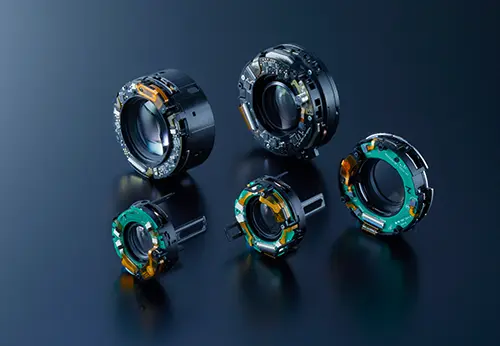
VC units developed for individual products
-
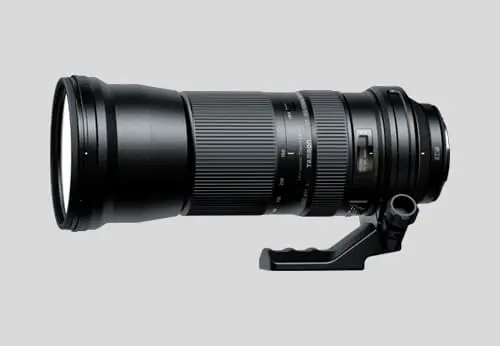
SP 150-600mm F/5-6.3 Di VC USD (Model A011)
-
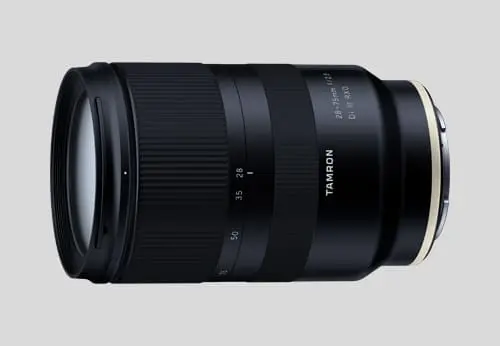
28-75mm F/2.8 Di III RXD (A036)
-
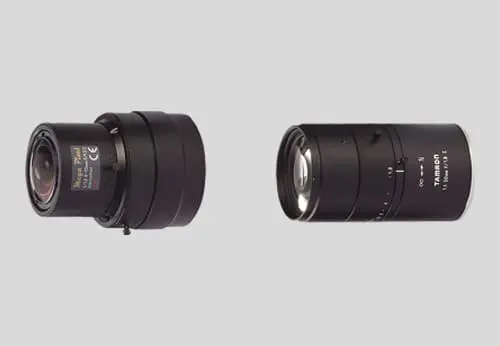
Surveillance camera lenses, FA and Machine vision lenses
-
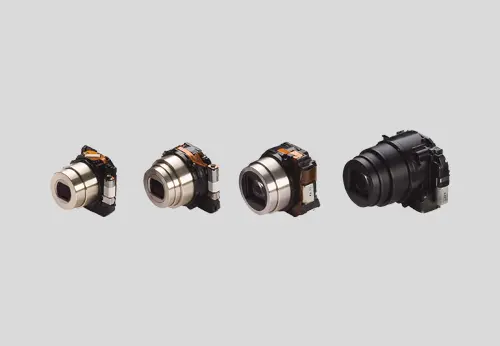
Camcorder lenses, Digital still camera lenses
-
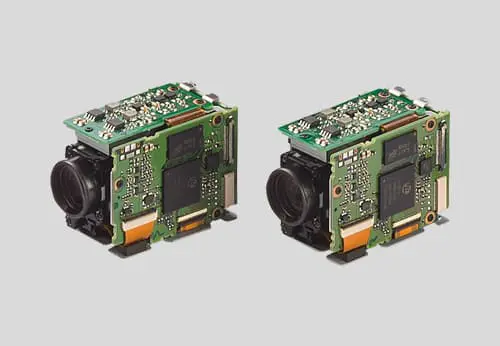
Camera module
-
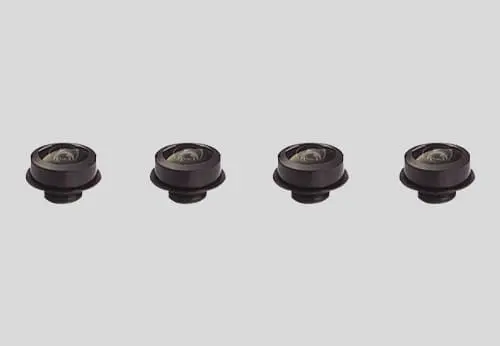
Automotive camera lenses
-
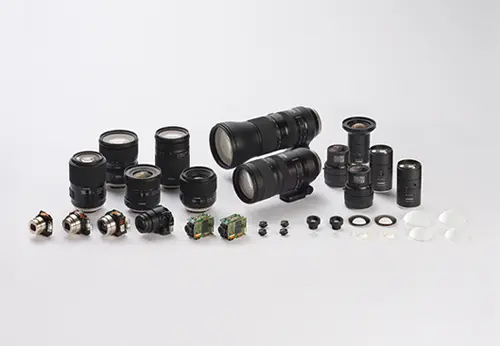
Medical Devices
In the mid 1990s, the wave of digitalization had reached the video industry. The shift from manual focus to auto focus gathered momentum, and films moved to digital. It also greatly influenced interchangeable lenses for digital SLR cameras, which continued to advance technologies. The rapid digitalization accelerated automation and computerization, and more accurate performance was demanded. To continue to bring innovative lenses to the world, TAMRON had to change dramatically. In 2005, the company started in-house production of high-performance vibration compensation mechanism and actuators (drive device for motors) for auto focus and released the high-power zoom lens AF28-300mm F/3.5-6.3 XR Di VC LD Aspherical [IF] MACRO (Model A20), which was equipped with its original vibration compensation (VC) mechanism in 2007. Since this time, the company has received high annual reviews, including in the EISA Awards, an authoritative award in Europe for photo and video products.
Because the company's production technologies were highly developed, it was able to mass-produce lenses that are difficult to produce. Because it became possible to internally mass-produce the large-aperture Molded-Glass Aspherical (lens) element, which controls spherical aberration and distortion aberration, and improves resolution performance, the company started to offer a high-performance, high speed, ultra-wideangle zoom lens. It has also launched original products such as SP 150-600mm F/5-6.3 Di VC USD (Model A011), a compact and lightweight, ultra-telephoto zoom lens that facilitates hand-held shooting, which was released in 2013. With the rise of full-scale digital SLR cameras, the company also expanded the product lineup of lenses to satisfy the strict requirements for image quality, along with advent of higher pixel cameras.
In late 2000s, the way photos were taken started to change as well. Mobile phones and smartphones equipped with a camera function spread, and photos were often taken with a mobile phone or smartphone, not a camera. Against this backdrop, compact mirrorless cameras, which removed the mirror mechanism from a digital SLR camera, appeared in the camera market. The shift to full-frame mirrorless DSLRs expanded in particular. With an emphasis on balance with increasingly downsized cameras, TAMRON released the 28-75mm F/2.8 Di III RXD (A036), which pursues both compact size and high performance, in 2018. It was highly reviewed by many customers. Since then, the company has been expanding the lens lineup for full-frame mirrorless DSLRs.
In the field of industrial lenses, more compact and functional lenses, such as lenses for Surveillance camera, lenses for FA/machine vision, automotive lenses, and lenses for drones, were realized and spread along with the technological evolution. Those lenses have become move accessible in people's lives. The company developed lenses for Surveillance camera that fulfill the market needs and ones for machine vision cameras for industrial applications. As automated driving advances, the company has been creating social security and safety through the production of optical products, including lenses for automotive applications that enable sensing, in addition to conventional lenses for visual recognition applications. Also, TAMRON develops various medical devices to meet the needs for advanced health care solutions.
Today, a variety of products have been created with the evolution of technologies. While continuing to fulfill the wishes of the founder, who found hope in the possibility of optics in Japan after the war, the company is using optical technologies, addressing social issues, and realizing "a fulfilling society" every day.
